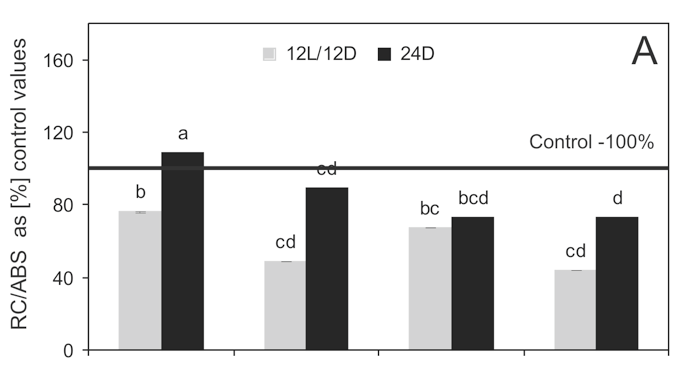
Paper category: Short communication
Corresponding author: Katarzyna Możdżeń (kasiamozdzen@interia.pl)
DOI: 10.1515/ohs-2018-0019
Received: September 7, 2017
Accepted: November 21, 2017
Full text: here
Citation (APA style):
Abstract
Paramecium bursaria (Ciliophora) is a cosmopolitan unicellular organism that plays a significant role in aquatic ecosystems. P. bursaria contains symbiotic algae and this association is a mutual symbiosis. The aim of the present study was to determine the activity of photosystem II (PSII) in Chlorella sp. inside P. bursaria cells. Ciliates were incubated for 7 days at different temperatures from 6 to 18°C, under the circadian cycle: 12 h light/12 h dark, at light intensity of 200 μmol m<sup>−2</sup> s<sup>−1</sup> and under constant darkness conditions. The control group was kept at a temperature of 18°C under constant light conditions. Changes in PSII were monitored using different fluorescence parameters. Differences in responses between endosymbiotic algae of two P. bursaria strains – Ard7 from a warm climate and KD64 from a cold climate – were determined. The highest photosynthetic activity of P. bursaria green endosymbionts was observed at a temperature of 18°C, regardless of the light conditions. Algae from warm climate were more sensitive to cold temperature stress than algae from P. bursaria collected in cold climate.

Bądź pierwszy, który skomentuje ten wpis